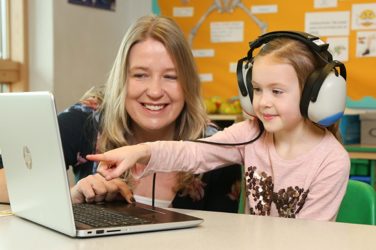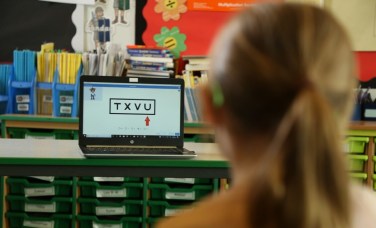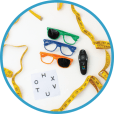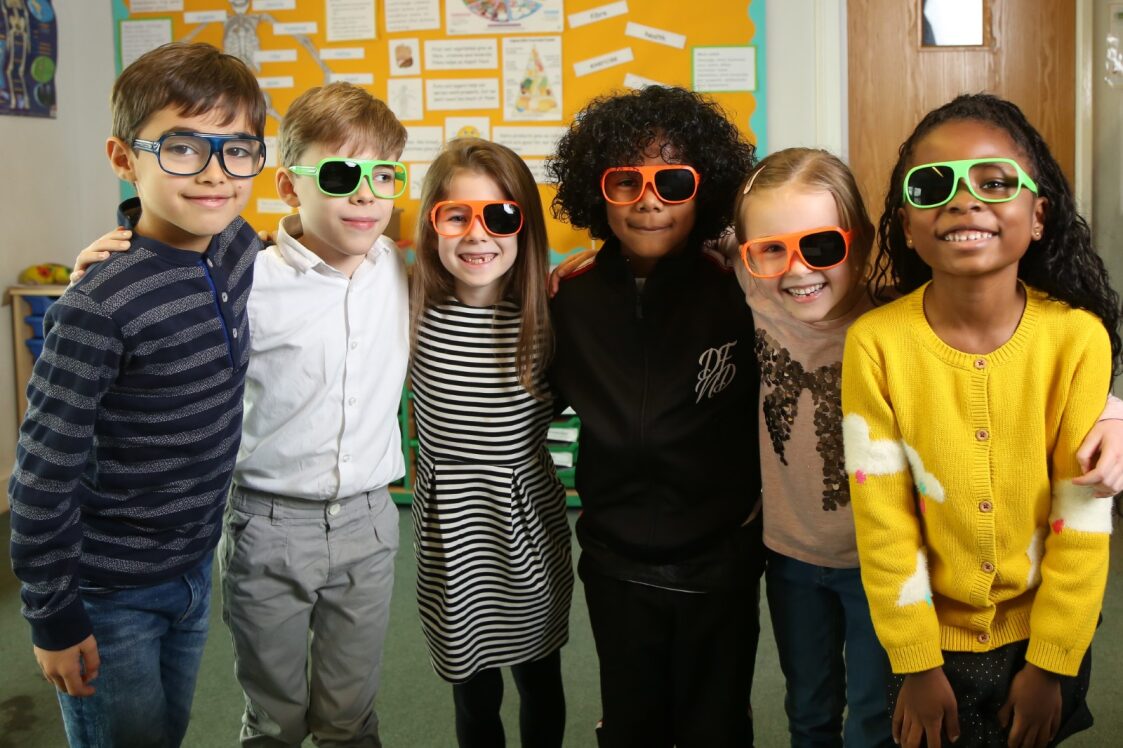The importance of diagnosing vision and hearing problems in children
Michael Ten-Berg asks whether unidentified vision or hearing impairments are holding back students in international schools and suggests that a new programme of simple testing can make a real difference.
False assumptions
Often taken for granted, good vision and hearing are fundamental to daily life, shaping our experiences and interactions. However, the implications of this assumption for the many children with unidentified mild to moderate vision or hearing problems are considerable. In international schools the situation can be worse. Without access to national screening programmes and with relatively high levels of staff and student turnover, children can often slip through the testing net, even if a school facilitates regular screening exercises with a local optician or hearing clinic. Up-to-date data may often simply not be available to school staff.
It is now thought that a large percentage of ‘learning difficulties’ could be due to hearing and/or vision impairments. According to the Cooper Institute, 60% of ‘problem learners’ may suffer from vision-related problems. Additionally, a number of studies show that up to 40% of students who have been diagnosed with a learning disability can be suffering from an undiagnosed visual impairment. Hearing impairments are not to be overlooked either, as they have been associated with attention problems, lower school performance, and behaviour issues, particularly in boys. The frustration and boredom resulting from hearing difficulties can hinder a child’s overall well-being and academic success.
Outcomes for children with undiagnosed hearing and/or vision issues
Education is predominantly visual, with around 80% of learning being vision-based. Most of the other 20% is auditory – hearing what teachers are saying.
Children aged 6 – 11 with both hearing and vision difficulties are much less likely to achieve educational targets, compared with those children without any impairment, and then go on to achieve lower grades overall in their secondary education. As a result, their chances of progressing to further education can be reduced, also impacting their self-esteem and career prospects.
Both hearing and vision changes can occur naturally over time as children grow and are exposed to other risks, which include prolonged exposure to excessive sound or time in front of computer screens. For example, one effect of the COVID-19 lockdowns has been a very sharp increase in childhood short sightedness as children spent less time outside and more time in front of laptops. Over a relatively short period, myopia has increased by 250%.
Around 8% of boys and 2% of girls have a colour vision impairment. By knowing which children have a colour vision impairment, schools can make very simple and effective adjustments – but schools need the data. The same goes for other undetected vision and hearing conditions.
What is truly tragic is that undetected hearing and vision can often be corrected or adjusted for, very easily. For example, in a study by UCLA, 80-90% of vision problems can be corrected with a pair of glasses. But without knowing which children’s progress or behaviour are affected by vision or hearing problems, schools are powerless to make appropriate recommendations for cost-effective interventions.
What can schools do?
The simplest thing that schools can do is to implement routine vision and hearing screenings for their students, but organising these on a reliable, consistent and ongoing basis for a full range of conditions (Lazy Eye or Amblyopia; Short Sightedness or Myopia and Colour Blindness) in international schools can pose problems depending on what local resources are available.
But with proper, regular screenings, the impact can be profound. Simple screenings can help identify potential issues early on, allowing for timely intervention. Educating students, teachers, and parents about the importance of eye health is also vital. Additionally, schools can conduct awareness campaigns about safe listening practices, emphasising the importance of controlling headphone volume and taking breaks to prevent hearing damage.
A new approach to simple and reliable large-scale screening

Dr. Sebastian Hendricks

Professor David Thomson
A simple, easy to use screening solution developed by City, University of London, is now available to any school around the world and which has already proved to be game-changing in the UK, transforming a school’s ability to offer reliable, large-scale testing.
In 2011, Thompson Screening was founded by the University to further develop and implement the work of Professor David Thomson, for 25 years head of Department at the University’s Department of Optometry and Dr. Sebastian Hendricks, Consultant at Great Ormond Street Hospital in Paediatric Audiovestibular Medicine.
A key development by the new company has been SchoolScreener https://schoolscreener.com which is very quick and easy way for schools to check children’s hearing and vision. The software, designed for use with children aged 6 – 11 is a variant of SchoolScreener already used by the UK’s National Health Service (NHS), to screen 5 year olds in over 5,000 UK-based schools.

No clinical knowledge is needed to implement the tests, enabling SEN or Support Staff to conduct quick checks after less than 30 minutes online training. Schools automatically receive the data to be able to plan and support children appropriately. Parents also receive a report suggesting, if necessary, that they take their child for further assessment – for vision to a high street optician, and for hearing to their doctor. This can be life-changing. In the UK full assessment from High Street opticians after an initial SchoolScreener testis free of charge, as are glasses for 5-16 year olds.
Global impact and the benefits of screening reports for schools

Thomson Screening’s software is now managing over 3 million screenings in schools to date, providing automated data reporting and administration. Users include not only the NHS and schools in the UK, but also non-profit organisations in the USA and NGOs in developing countries.
Implementing a program of regular checks for children aged 6 – 14 equips schools with the knowledge and data to make informed decisions about more effective learning interventions. This approach, in turn, allows schools to better plan resources, save costs, and make necessary adjustments to support their students during the later stages of Primary and Early Secondary schooling. In essence, data becomes a powerful tool for schools to enhance the educational experience for every child.
 Michael Ter-Berg is a trustee of Future First (https://futurefirst.org.uk/) and CEO of Thomson Screening
Michael Ter-Berg is a trustee of Future First (https://futurefirst.org.uk/) and CEO of Thomson Screening
To find out more about SchoolScreener see: https://schoolscreener.com/
FURTHER INFORMATION

 For international schools the cost is £275 (US$355) for either vision or hearing. This for a 12 month licence for use with up to 50 children, including training and support. Discounts are available for more than 50 children.
For international schools the cost is £275 (US$355) for either vision or hearing. This for a 12 month licence for use with up to 50 children, including training and support. Discounts are available for more than 50 children.
There is a one off £25 (US$35) charge to ship the glasses, color vision test for use with SchoolScreener Vision. For Hearing screening, we supply kit which plugs into plugs the USB port of a laptop. This is available to rent or purchase.
All images kindly provided by SchoolScreener
Sources:
https://bmjpaedsopen.bmj.com/content/3/1/e000389
https://visiontolearn.org/impact/ucla-study-impact-analysis-of-vision-to-learn/
https://visiontolearn.org/wp-content/uploads/UCLA-Published-Vision-To-Learn-Study.pdf
https://www.cooperinstitute.org/blog/vision-and-learning-are-linked

